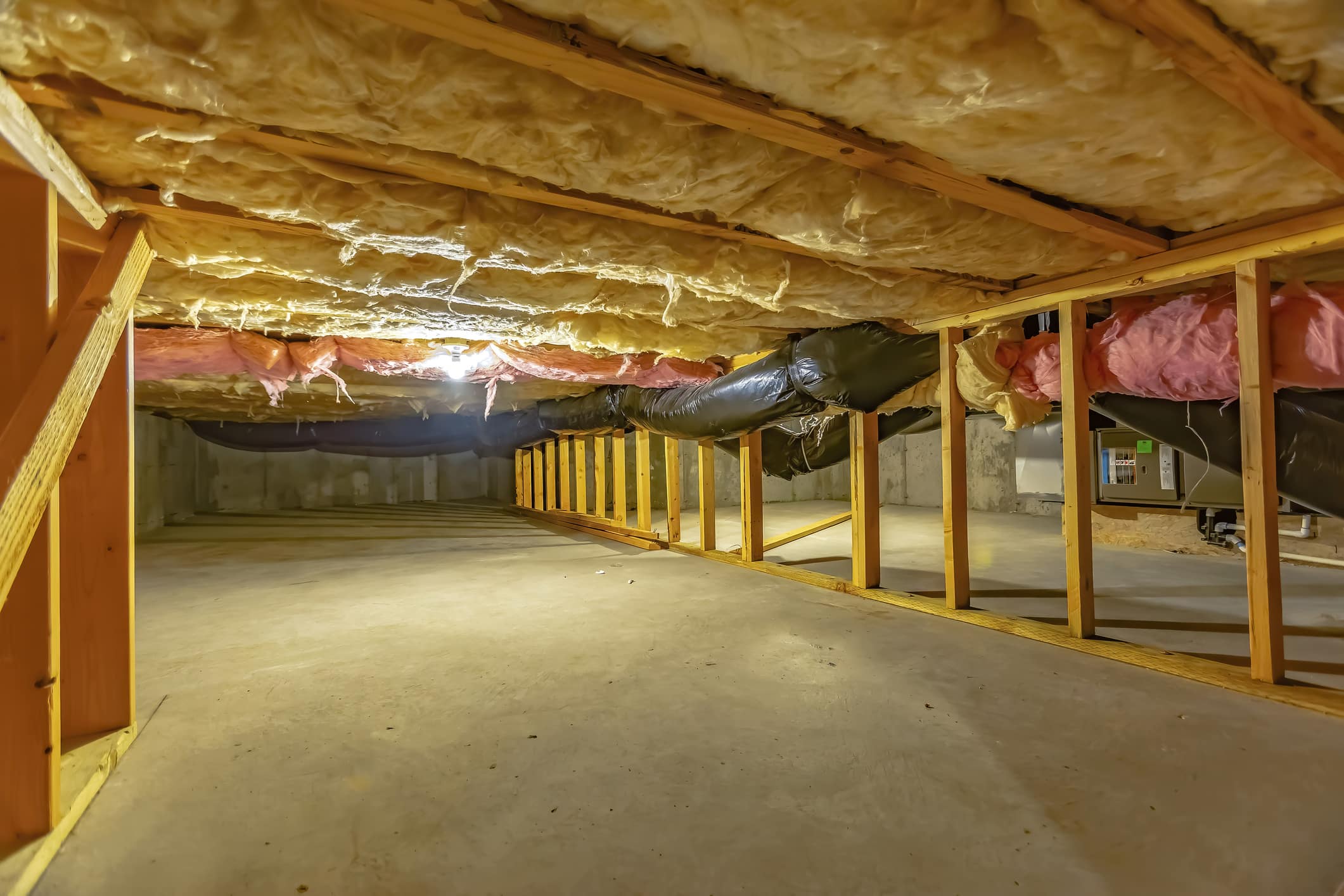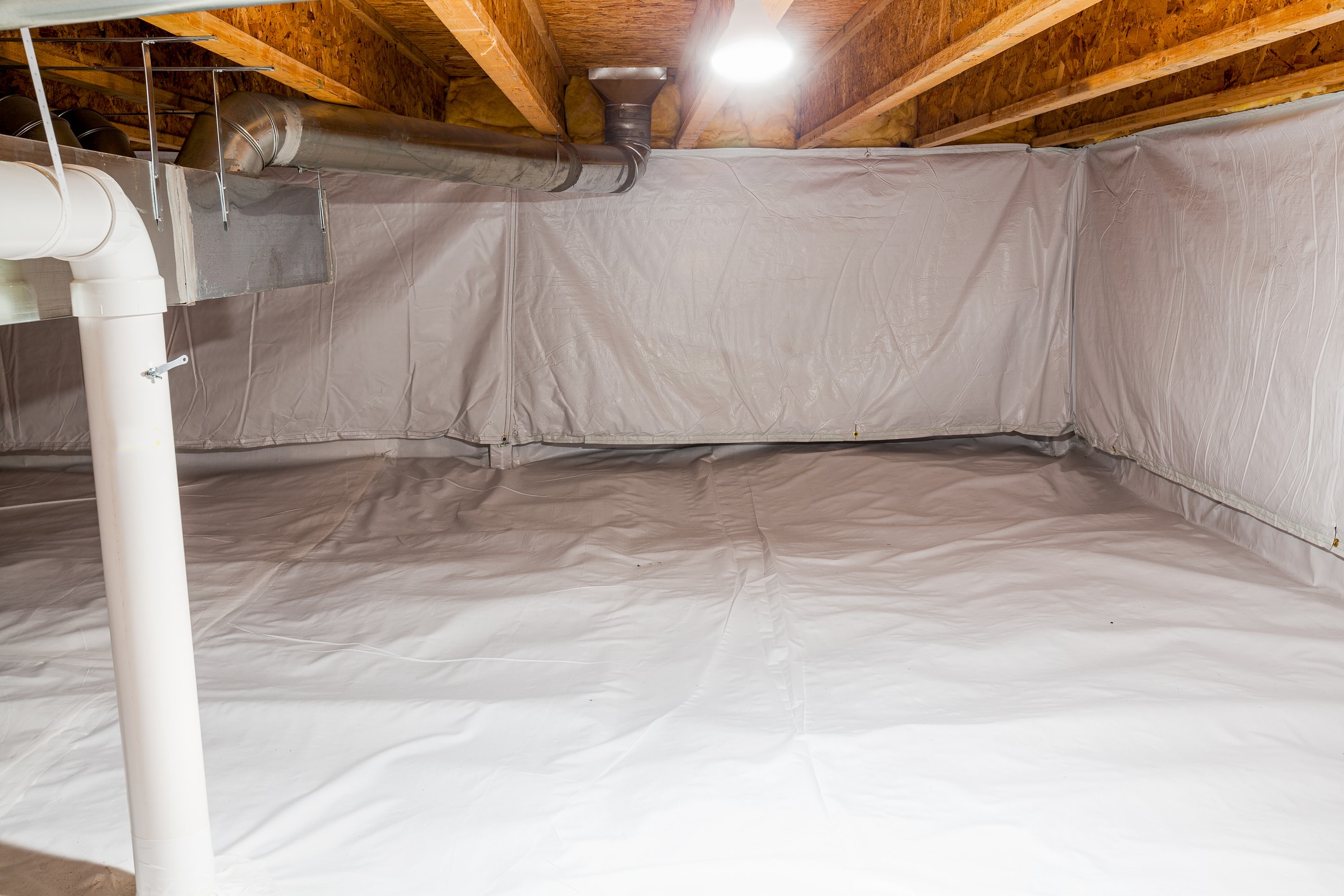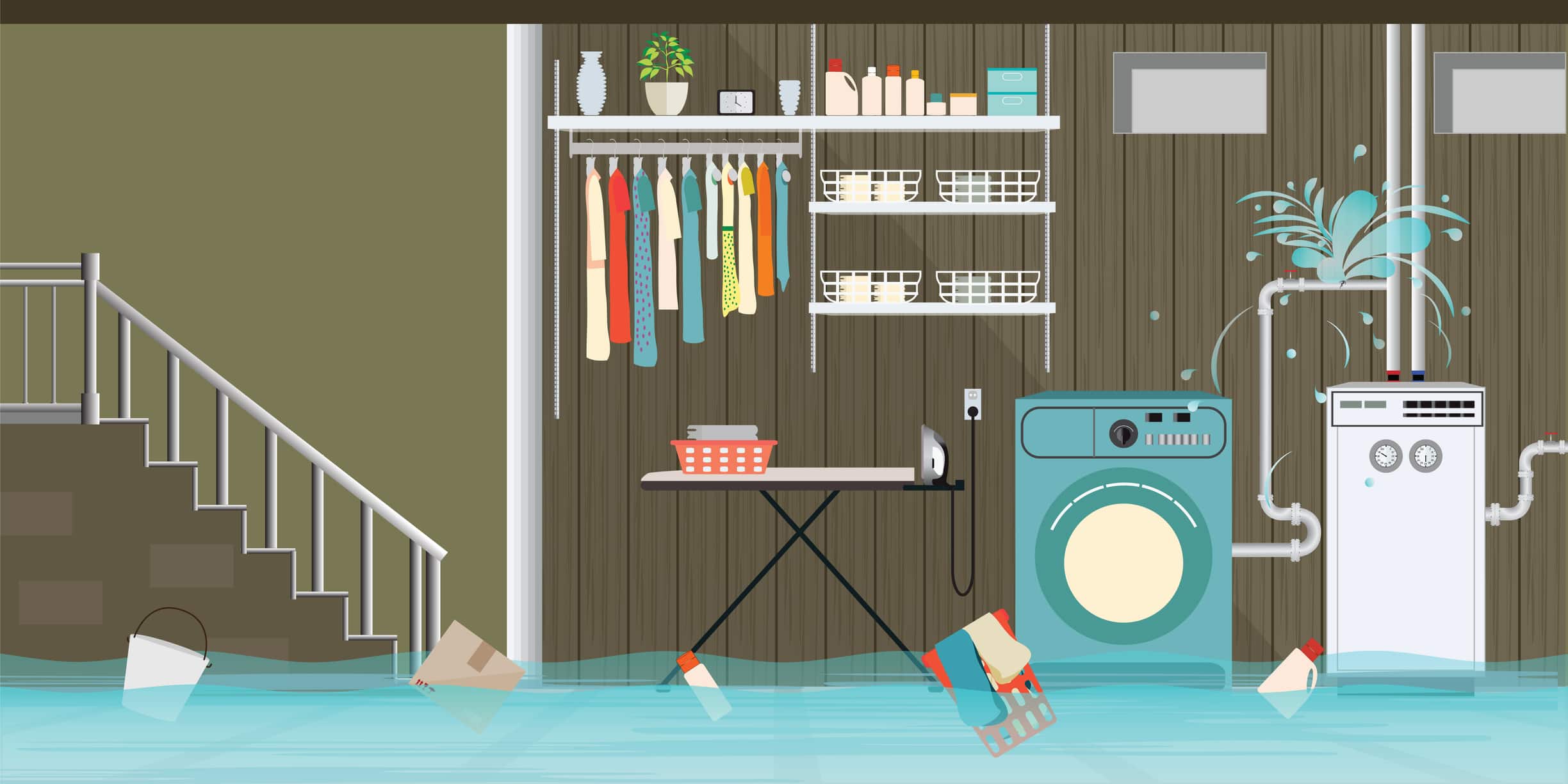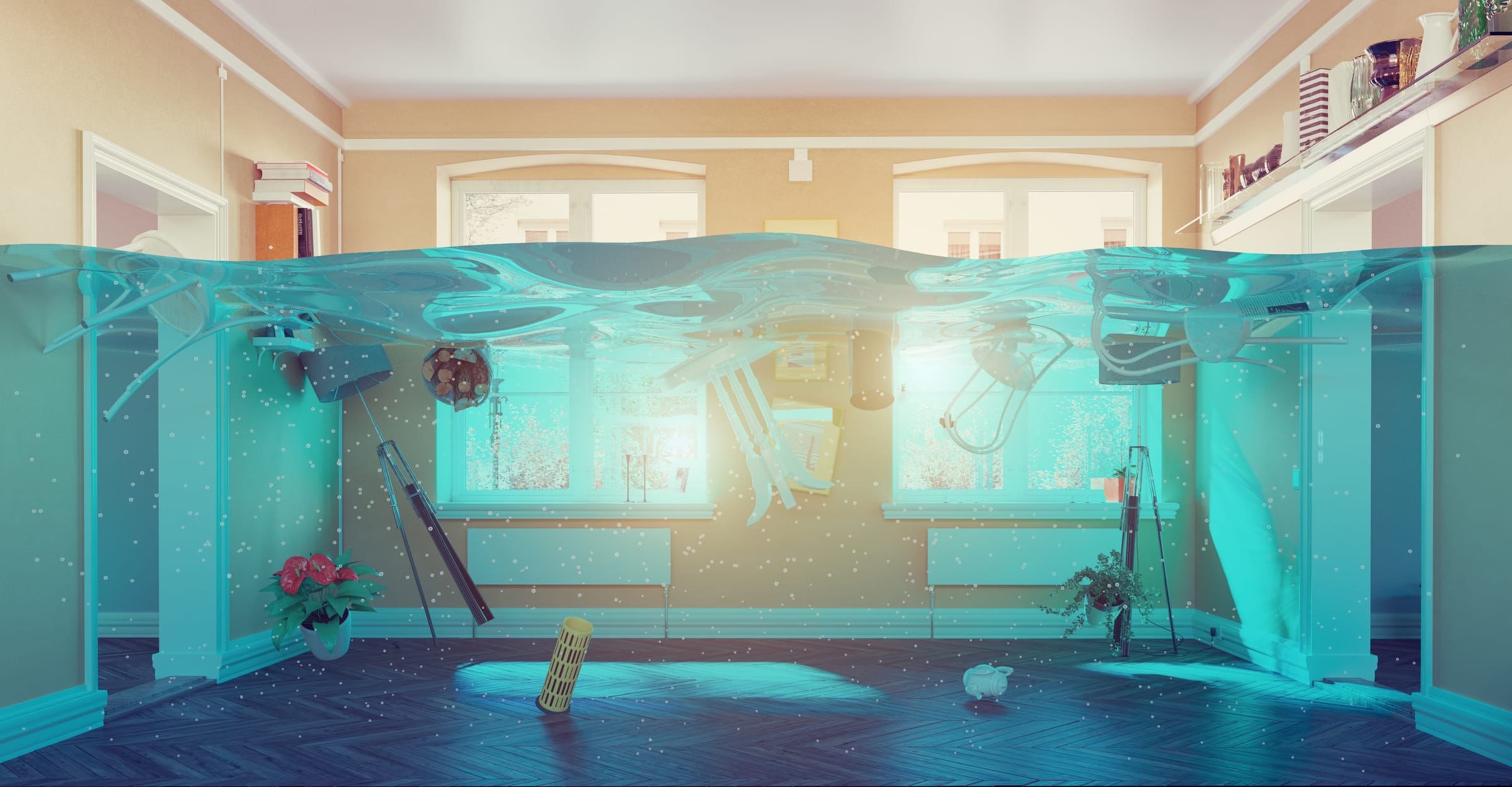Moisture-related damage is one of the most common yet overlooked issues in many homes, and it can lead to devastating consequences like mold growth, weakened structures, and unhealthy indoor air quality. If you want to protect your home and enjoy a comfortable living space, installing vapor barriers is a smart and sustainable solution.

Crawl Space Water: Unseen Moisture Threats in a Colorado Springs Home
Colorado Springs homeowners, let’s talk about a part of your house that you probably don’t think about very often – your home’s crawl space. It’s out of sight and usually out of mind, but this often-overlooked area can harbor hidden water threats that, if left unchecked, could lead to big problems for your entire home. Today, we’re going to shed some light on these dark, cramped spaces and explore why keeping them dry is crucial for the health of your home.
Understanding the Importance of Crawlspaces
First, let’s understand what a crawlspace is and why it’s important. Your crawlspace is like the unsung hero of your house, providing a buffer between your living space and the ground. It offers access to important systems like plumbing, electrical wiring, and HVAC components. In Colorado Springs’s varied climate, with our hot summers and cold winters, the crawlspace also plays a role in regulating your home’s temperature and moisture levels.
But when water invades this space, it can spell serious trouble. The problem is you might not notice it right away. Unlike a flood in your basement or a leak in your ceiling, water in your crawlspace can go undetected for weeks or even months. By the time you notice signs of a problem, significant damage may have already occurred.
Protecting your home’s foundation from water-related issues is crucial to prevent structural damage and ensure the longevity of your home.
What is a Crawl Space and Why is it Prone to Moisture?
A crawl space is a narrow, enclosed area beneath your home, typically between the ground and the first floor. It’s usually around 1-3 feet high and provides essential access to plumbing, electrical, and HVAC systems. However, due to its location and design, a crawl space is particularly prone to moisture issues. The surrounding soil can seep water into the crawl space, especially during heavy rains or snowmelt.
Additionally, condensation can form on cold surfaces like ducts and pipes, adding to the moisture problem. Plumbing leaks and leaky basement windows can further exacerbate the situation, allowing water to infiltrate and accumulate. All these factors make it crucial to regularly inspect and maintain your crawl space to prevent moisture problems.
Causes of Moisture in Crawl Spaces
Moisture in crawl spaces can stem from a variety of sources, each contributing to the overall dampness and potential damage.
- High humidity levels and condensation on cold surfaces are common culprits, as they create a moist environment conducive to mold growth.
- Water leaks from plumbing, appliances, or HVAC systems can introduce significant amounts of water into the crawl space.
- Groundwater seepage from the surrounding soil, especially in areas with poor drainage, can also lead to persistent moisture issues.
- Clogged gutters and leaky basement windows and doors can allow water to enter the crawl space. Poor ventilation and air circulation further compound the problem, trapping moisture and creating an ideal environment for mold and pests.
Signs of Water Issues in Your Crawlspace
So, what should you be on the lookout for? Detecting water in the crawl space early can prevent significant damage and health hazards. Here are some red flags that might indicate water issues in your crawlspace:
Musty Odors in a Damp Crawl Space
If you notice a damp, earthy smell in your home, especially on the ground floor, it could be coming from a wet crawlspace.
An encapsulated crawl space can help prevent musty odors by keeping the area dry and clean.
Increased Energy Bills
Moisture in your crawlspace can lead to poor insulation efficiency, making your HVAC system work harder.
Warping or Buckling in Ground-Level Floors
Excess moisture can cause wood to swell and warp.
Pest Infestations in Crawl Spaces
Damp crawlspaces are attractive to many pests, including termites, carpenter ants, and rodents.
Keeping the crawl space free of other debris like leaves and dirt can help prevent pest infestations.
Mold Growth Due to Crawlspace Water
You might spot mold on ground-level walls, baseboards, or furniture.
When the sump pit fills with water, the sump pump activates to remove the water, helping to prevent mold growth.
Preventing Water in Crawl Spaces
Preventing water in crawl spaces requires a proactive approach, combining regular maintenance, timely repairs, and strategic upgrades. Start by regularly inspecting your crawl space for signs of moisture, mold, and damage. Fix any plumbing leaks, cracks, or gaps in the walls and floors promptly to prevent water from entering. Installing a sump pump and a drain tile system can effectively manage groundwater and surface water, keeping your crawl space dry.
A vapor barrier is another essential tool, preventing moisture from seeping into the crawl space from the ground. Ensuring proper ventilation and air circulation is crucial, as it helps to reduce humidity levels. Lastly, keep gutters and downspouts clean and clear of debris to prevent water from pooling around the foundation and seeping into the crawl space.
Crawl Space Encapsulation and Drainage Solutions
Crawl space encapsulation and drainage solutions are highly effective in preventing moisture problems and maintaining a dry crawl space. Crawl space encapsulation involves sealing the area with a vapor barrier and installing a drainage system to manage moisture. This comprehensive approach not only keeps the crawl space dry but also improves indoor air quality and energy efficiency. A drain tile system, consisting of a network of pipes, collects and redirects water away from the foundation, preventing it from entering the crawl space.
A sump pump is another valuable tool, actively pumping water out of the crawl space and away from the foundation. Using a vapor barrier further enhances moisture control by preventing ground moisture from entering the crawl space. Additionally, a dehumidifier can be used to remove excess moisture from the air, ensuring a dry and healthy environment.
By understanding the causes of moisture in crawl spaces and taking proactive steps to prevent water from entering, homeowners can protect their homes from damage and create a healthier living environment. Regular maintenance, timely repairs, and strategic upgrades are key to ensuring a dry and safe crawl space.
When to Call Water Mitigation Experts in Colorado Springs
If you notice any of these signs, it’s time to call in the top water mitigation services in Colorado Springs. These professionals have the expertise and equipment to inspect your crawlspace and identify any water issues safely.



